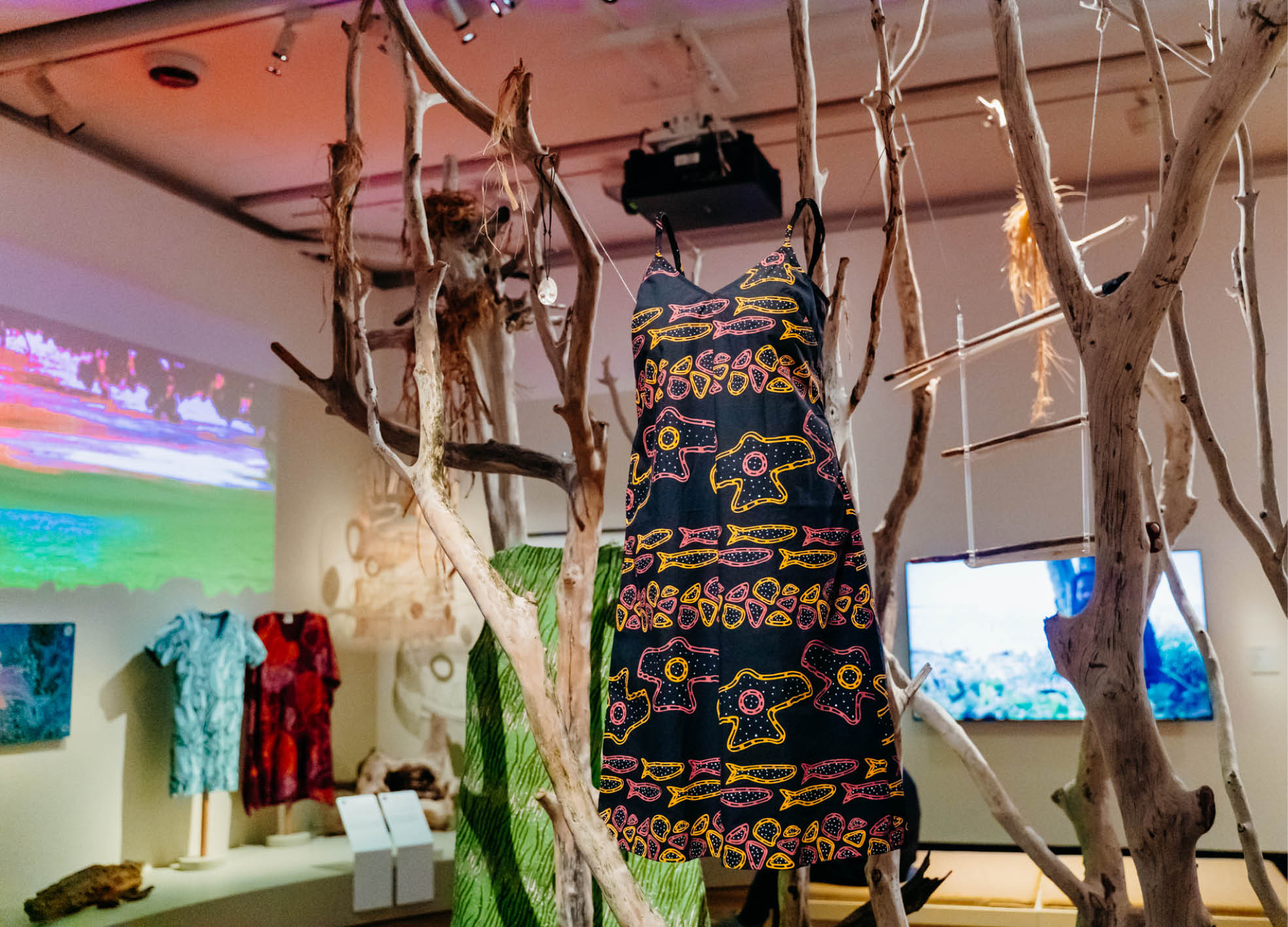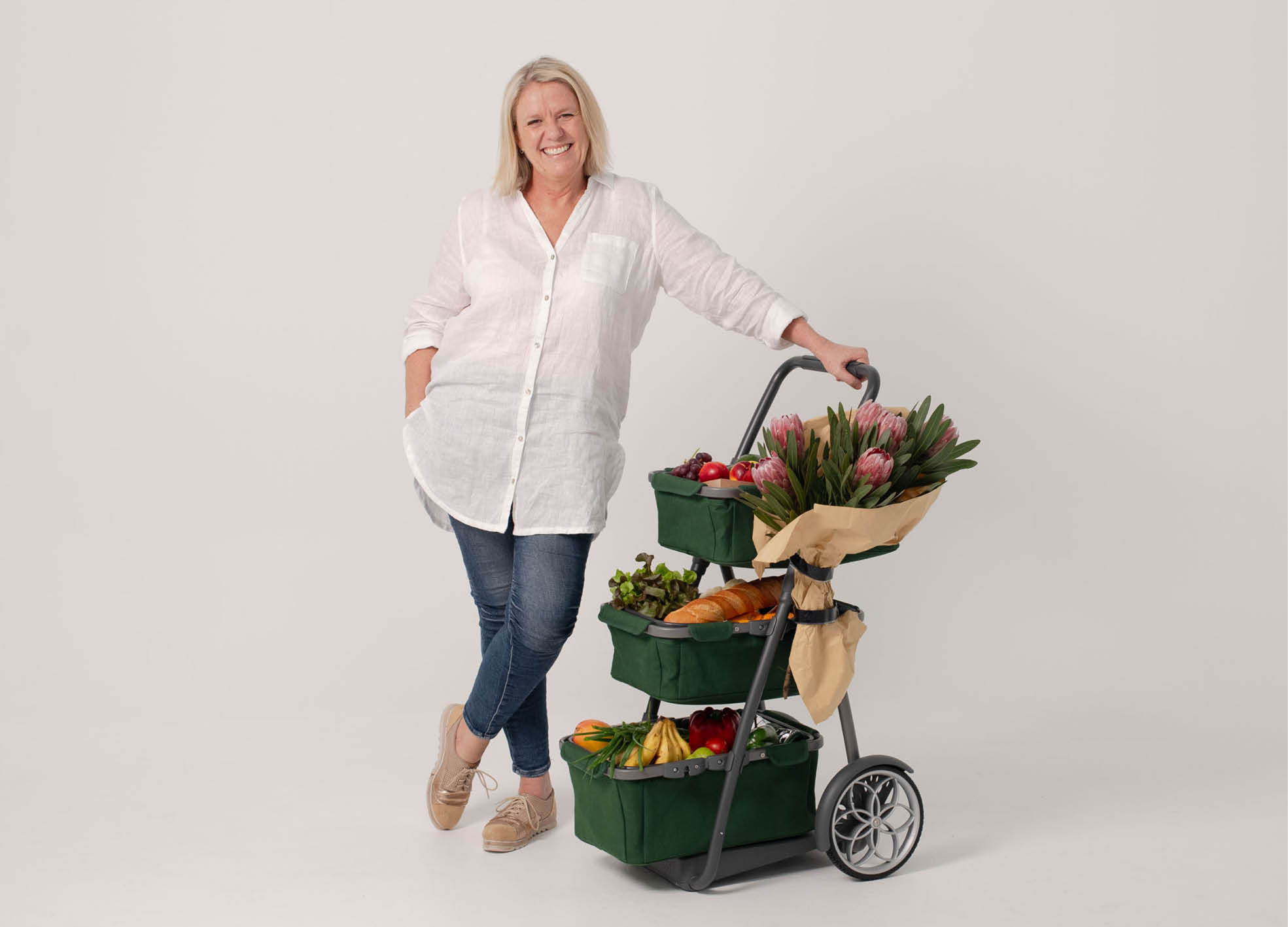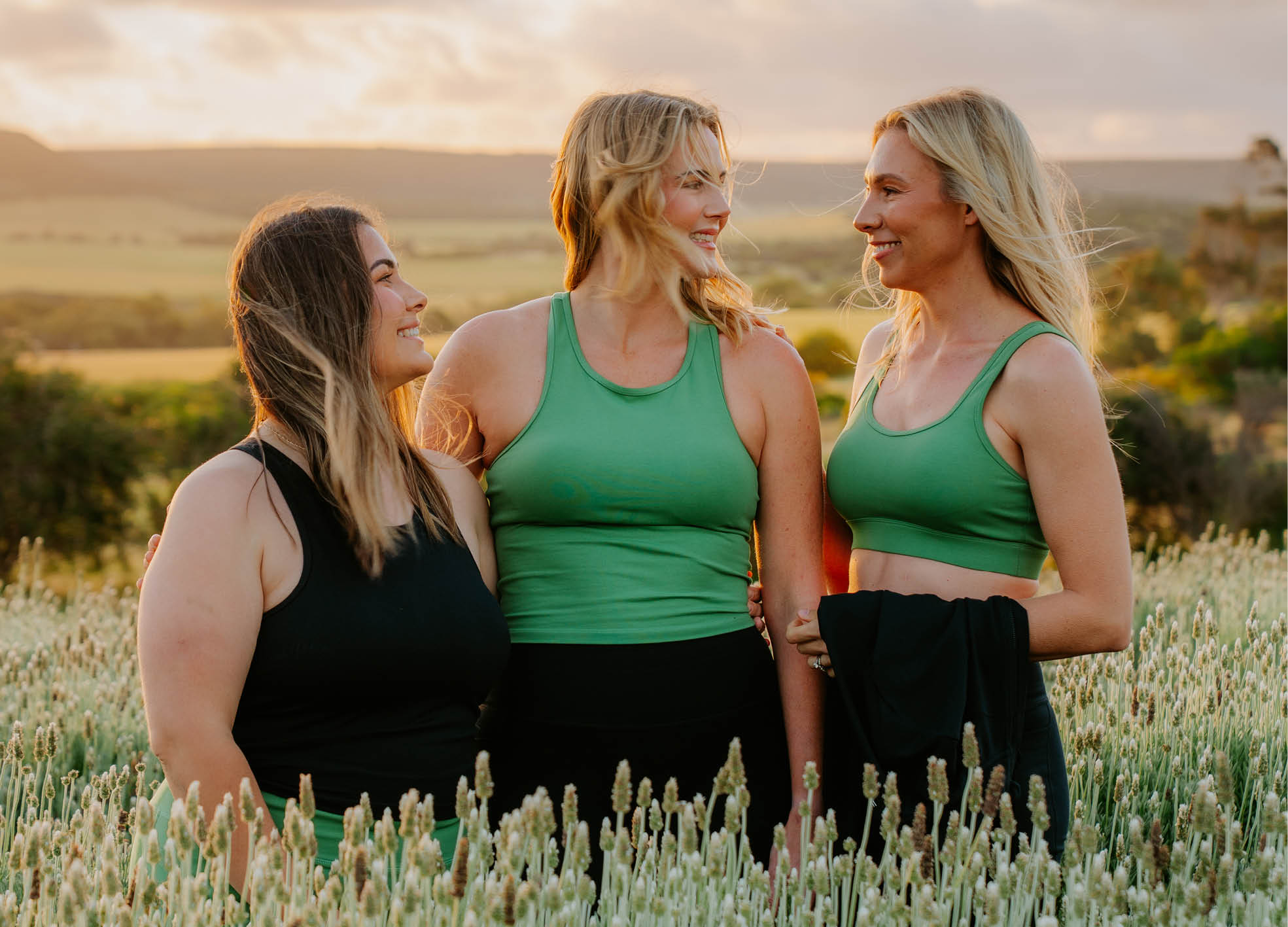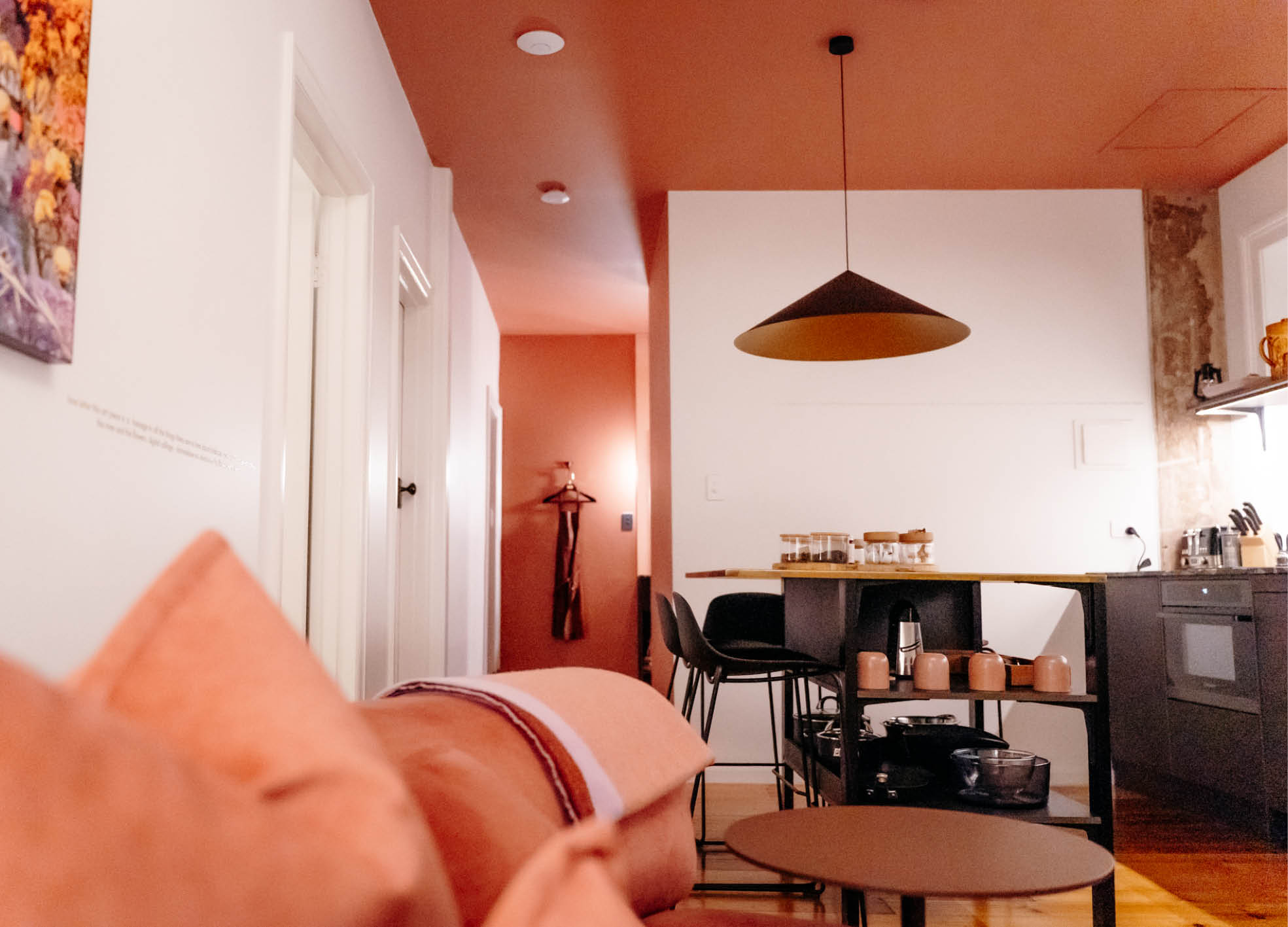Crowning Glory: How to Craft a Reusable Fabric Christmas Crown

- Words by Peppermint
It’s an Aussie Christmas classic – pulling a cracker and donning a paper crown to wear through a long lunch that lingers into the late afternoon under the hot summer sun.
But no matter how beloved they may be, it must be admitted that these flimsy paper constructions, not to mention the other disposable detritus that fills a cracker, are not the most sustainable celebrational accessory.
Why not craft a more long-lasting crown? No need to master the art of metal smithing – a little fabric and some ribbon make for a suitably celebratory circlet that can be reworn by you and your loved ones year after year. They can even be used in those barren 11 months that separate Christmas times, for birthdays, fancy dress-ups, or just to add that casual touch to an outfit that says, “Yes, I am a queen.”

But first, why do we wear these anyways?
While this is not an official outing of the sewing detective, we were unable to resist dipping into the history of these hats. Many places will tell you that the paper crown tradition can be traced back to the ancient Romans’ winter solstice festival of Saturnalia, a claim which this sewing sleuth was immediately sceptical of.
Saturnalia was a celebration characterised by unruly behaviour, role reversals and temporary societal upheaval. Their festive headgear of choice was the pileus, a conical felt cap traditionally worn by freedmen. During Saturnalia, Roman citizens, freedmen and slaves alike wore the cap so everyone was “pileated” without distinction.
The syncretising of assorted midwinter celebrations into Christmas traditions is undeniable, yet it seems important to stress that rather than an unbroken lineage of secret “pagan” rituals, most of the modern concept of Christmas stems pretty directly from the reinvention or reimaging of Christmas as a holiday within the Victorian period.
Indeed, the Christmas cracker was invented by candy maker Tom Smith in 1847 and the paper crown was added by his son, Walter Smith, as a way to distinguish their product as competing companies sprung up in the wake of the crackers’ success.
The paper crowns themselves were possibly inspired by epiphany cakes in Europe, especially France, which are often served with a paper crown on top.
Epiphany is not part of your classic Aussie Christmas, though it is celebrated in various ways across the world on or about 6 January. It is the twelfth day of Christmas and marks the arrival of the Magi, the Three Wise Men or Kings, to Bethlehem. It is often celebrated with a cake that contains a fève – a bean, charm, or tiny plastic figurine of baby Jesus hidden inside. Whoever finds the fève in their slice is crowned king or queen with the paper crown and is either believed to have good luck for the rest of the year or saddled with the bad luck of paying for the cake.
Does this tradition echo the social reversal typical of Saturnalia? Kind of. Would we call this a direct line from pileus caps to paper crowns in our crackers? Meh. The sewing detective’s final word on the topic is simply, once again, that everyone should read Terry Pratchett’s The Hogfather.
INSTRUCTIONS
Now you’ve been forced to learn some history (or perhaps you joyously skipped the above) you can have some arts and crafts.
This is quite a simple and speedy DIY that can easily be made with scraps on hand, or you can splurge on some festive fabric and make a matching set for your family.
THINGS YOU’LL NEED (makes one crown)
0.5 metres of woven fabric – make your crown reversible by using two different fabrics or the same on both sides!
0.5 metres of iron-on interfacing
60cm of ribbon
Sewing machine
Ruler
Point turning implement
Fabric marker/pencil
Scissors
Pins
Iron
Scissors
Sewing machine and associated accoutrement
DOWNLOAD THE TEMPLATE
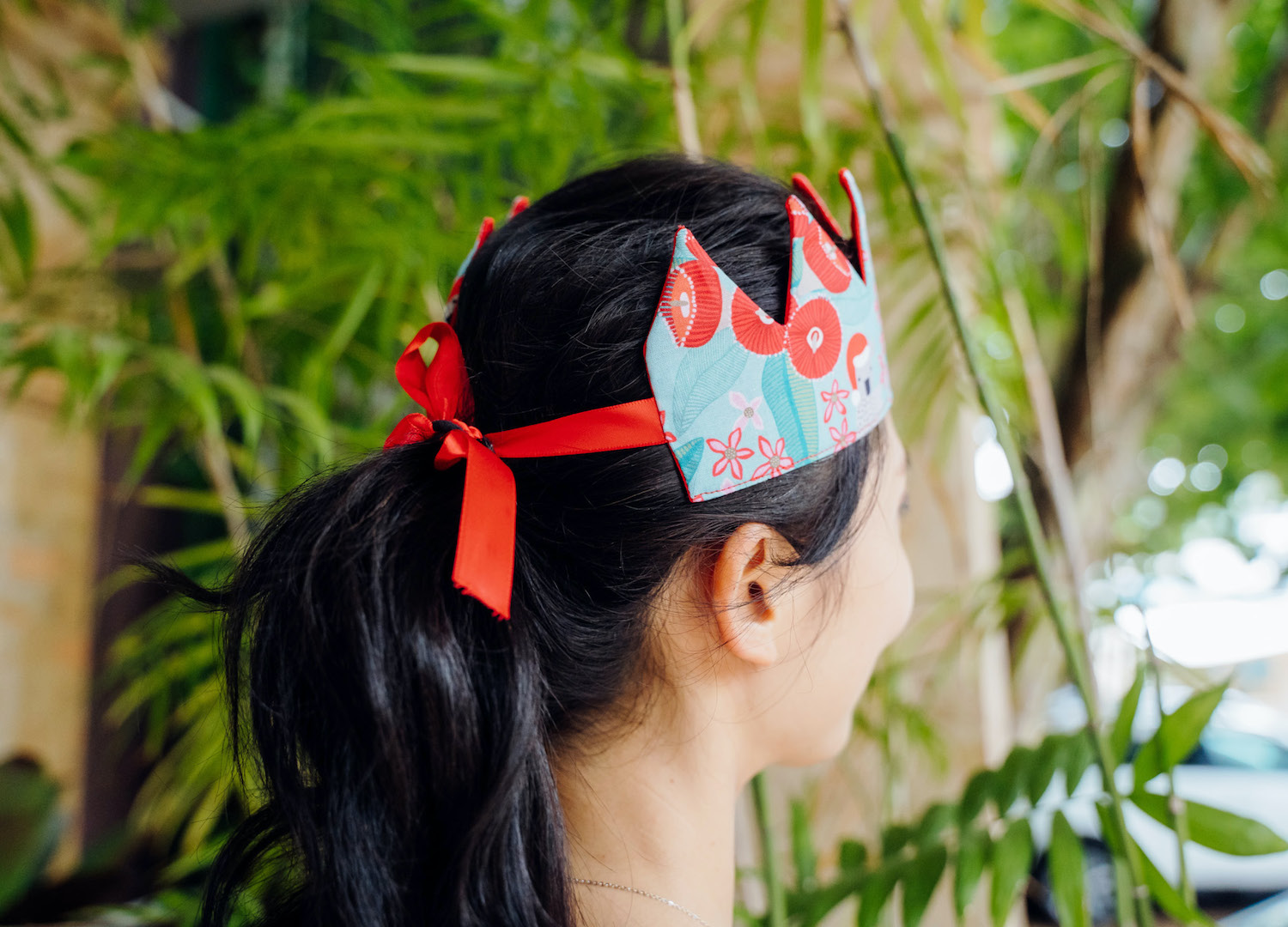
STEP ONE // Print and cut out the provided template or freehand your own if you want to change the size significantly – because of the ribbon closures at the back, the template can be adjusted to fit most head sizes. The crown template is a rectangle 40cm long and 4cm high topped with 8 triangles with a base 5cm wide and a height of 4cm.

STEP TWO // Use the template (on fold, or simply flip to mirror) to cut out some iron-on interfacing.
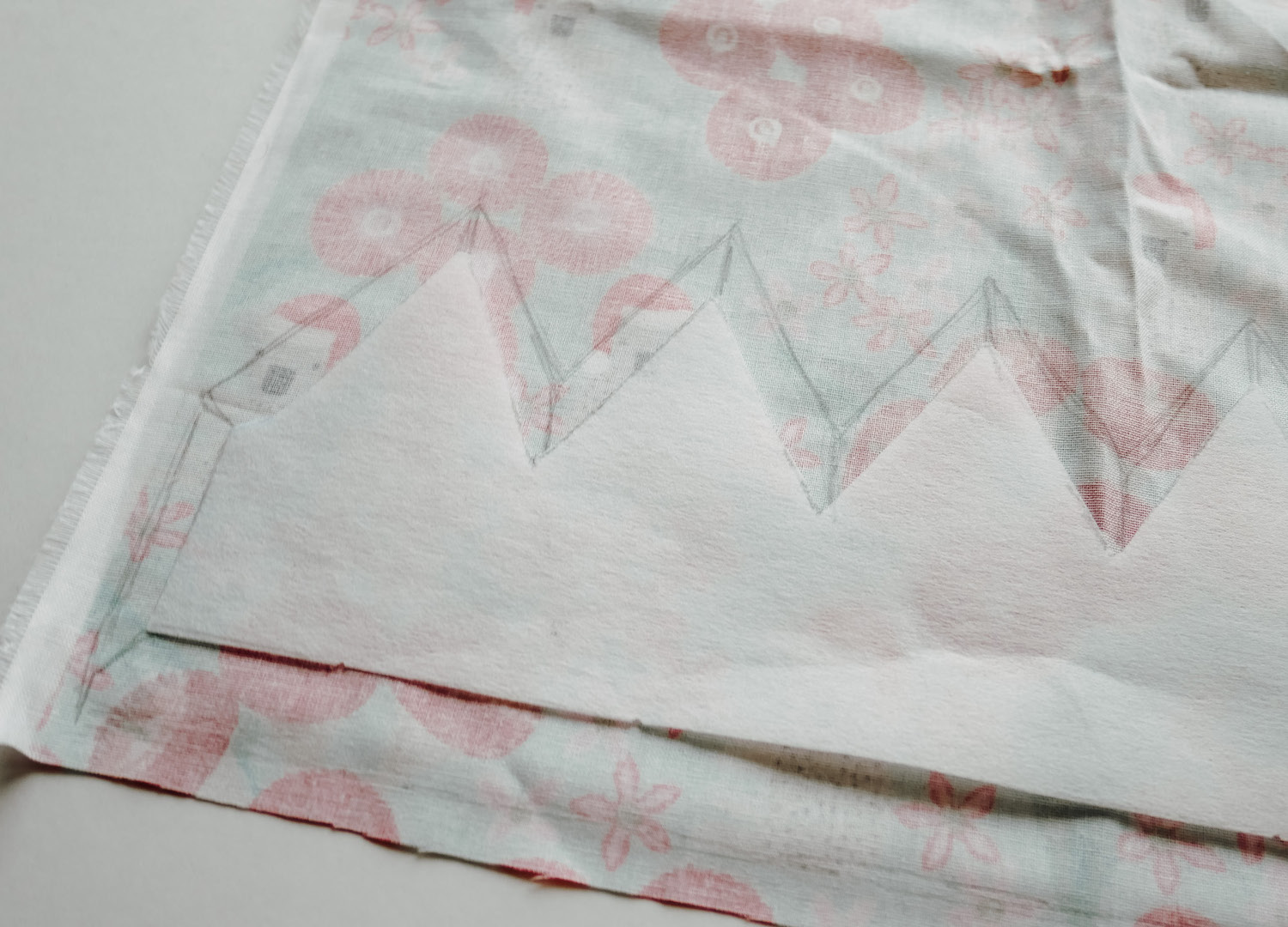
STEP THREE // Use interfacing to cut out your two pieces of fabric, except cut them with an added 1cm seam allowance around all sides.
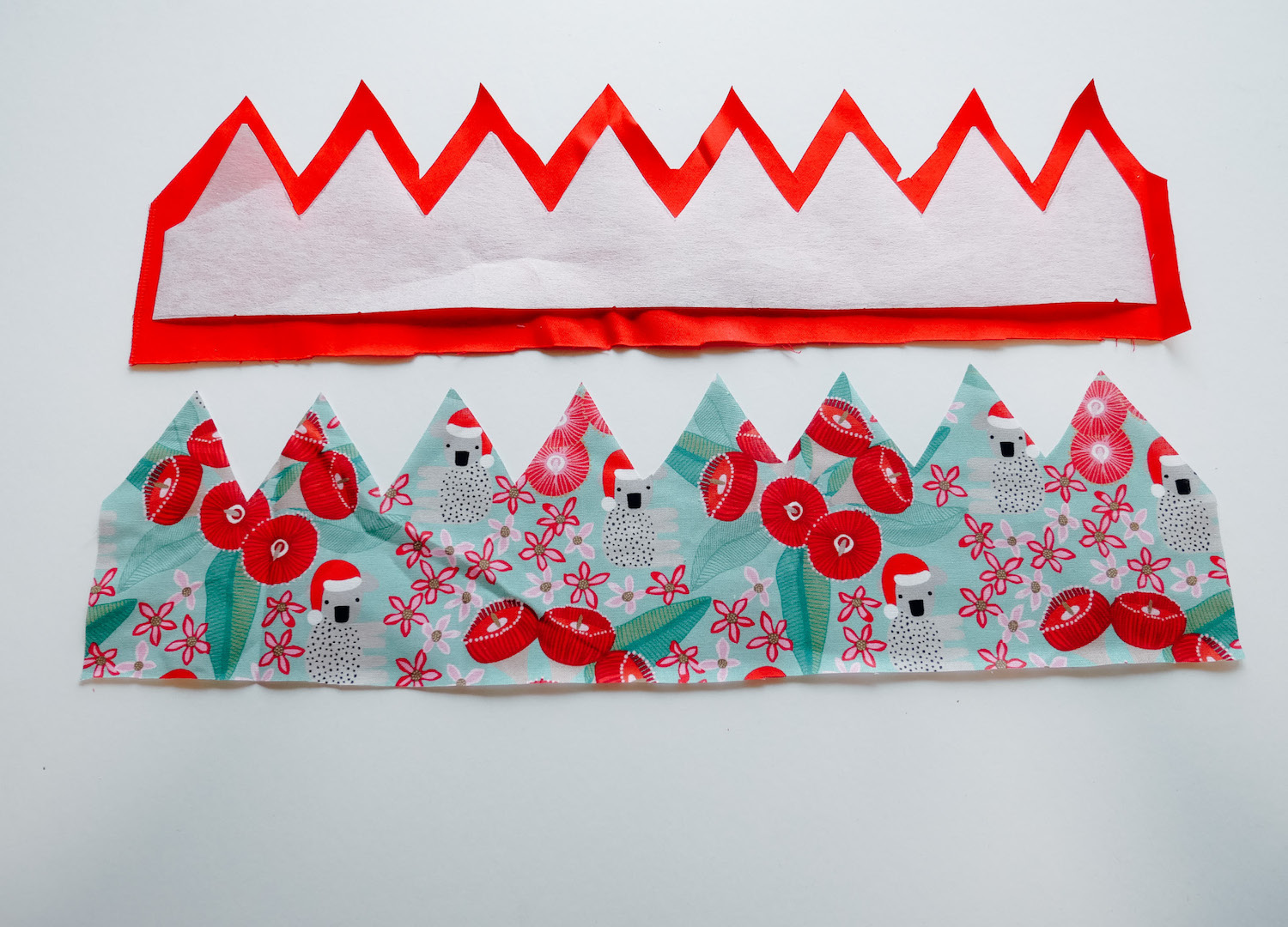
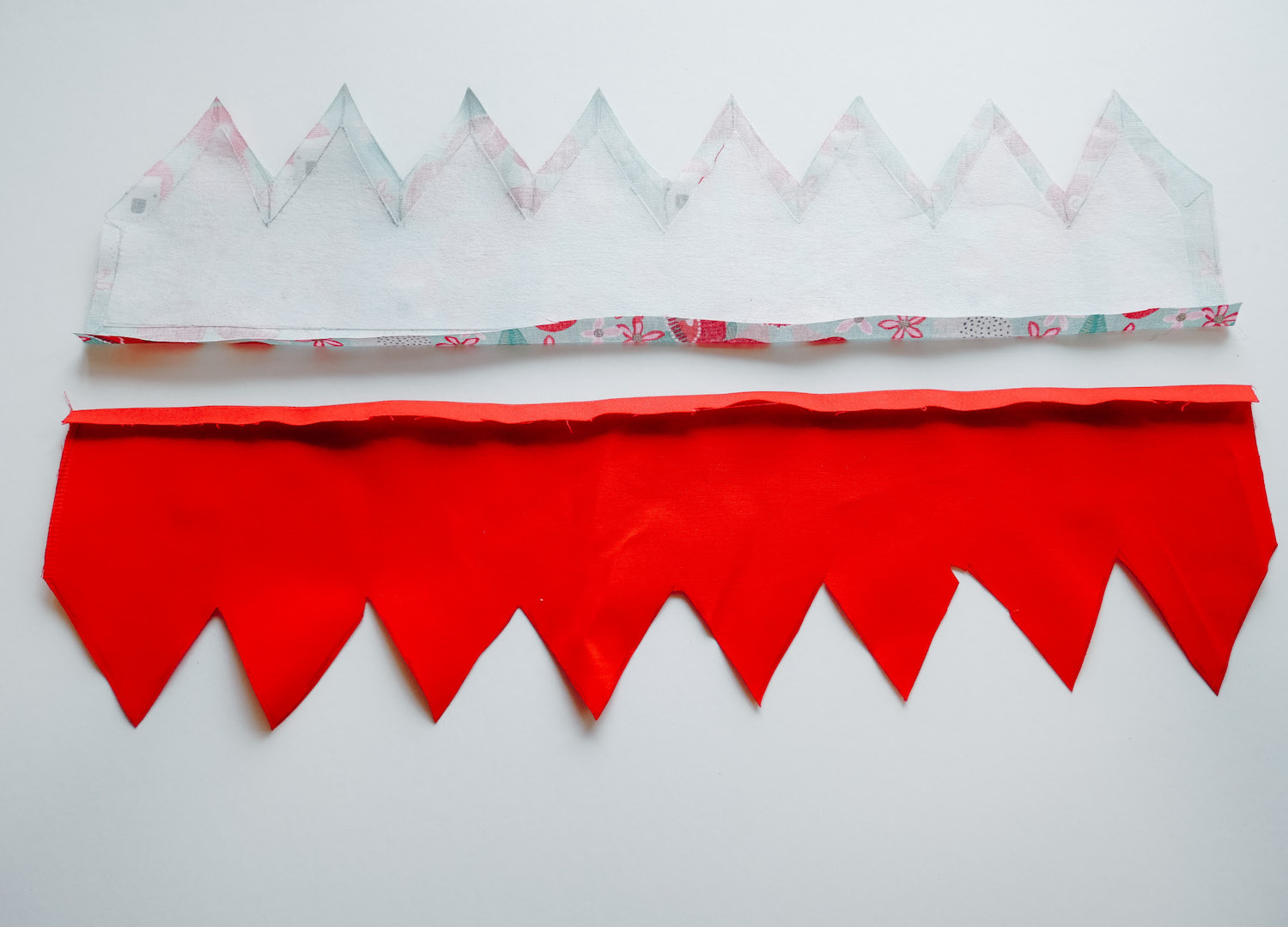
STEP FOUR // Iron on the interfacing to the wrong side of one of your fabric pieces. Press the bottom flat edge of both crown pieces up 0.5cm towards the wrong sides of the fabric.
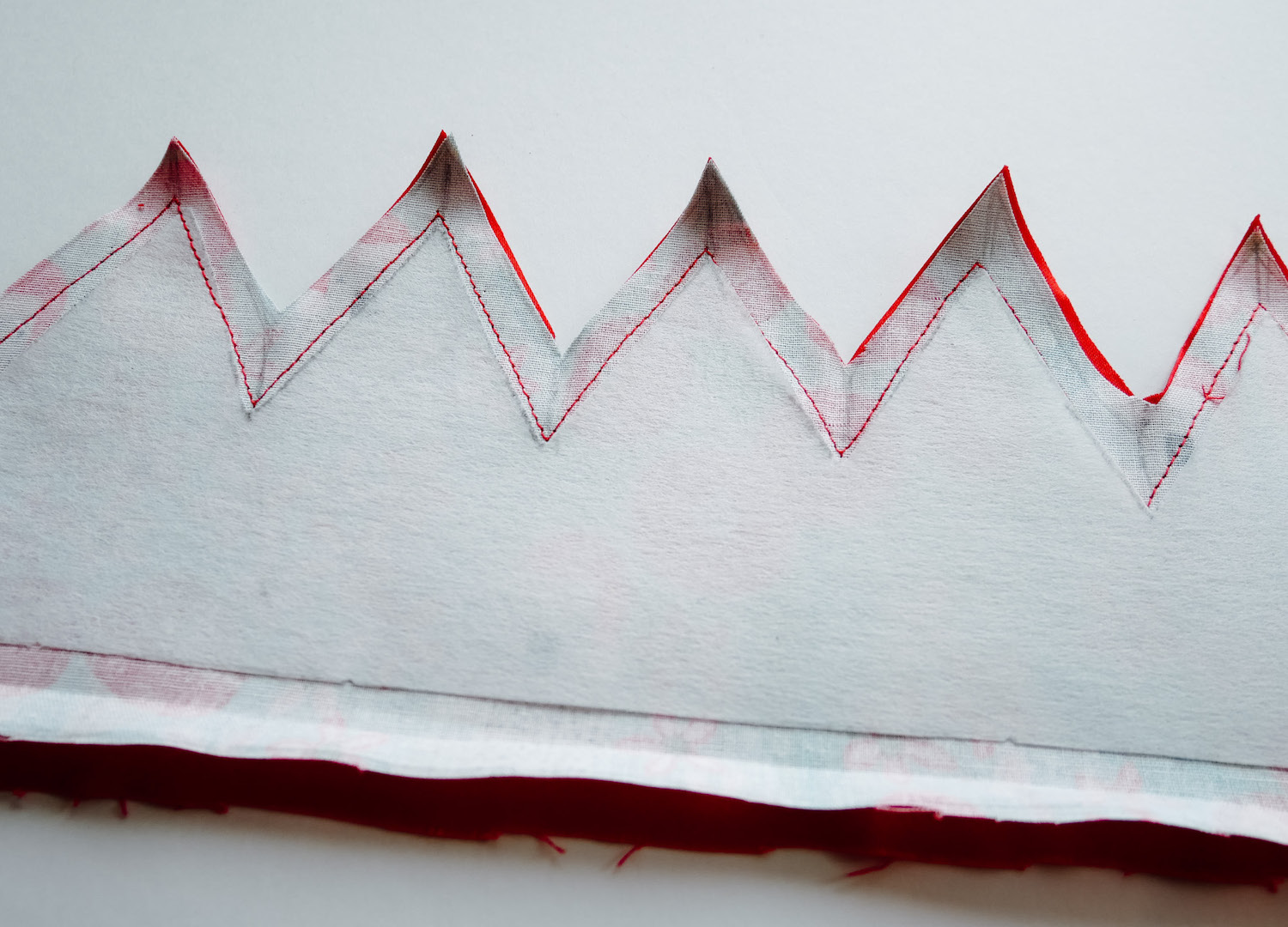
STEP FIVE // Place the two pieces of fabric wrong sides together and stitch together along the top, zig-zagged edge with a seam allowance of approximately 1cm.
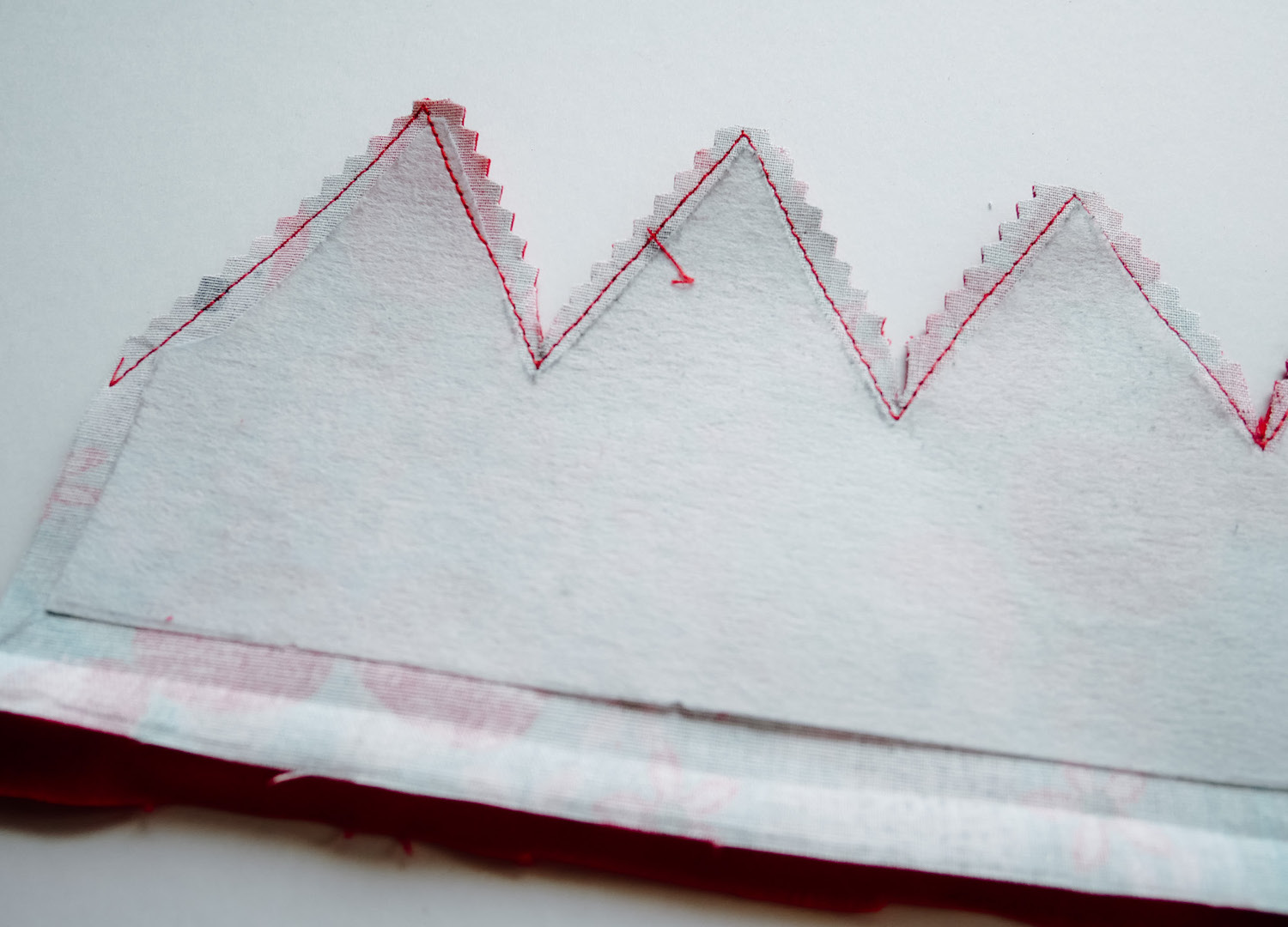
STEP SIX // Trim seam allowances, clipping in particularly at the top and bottom of the triangles.
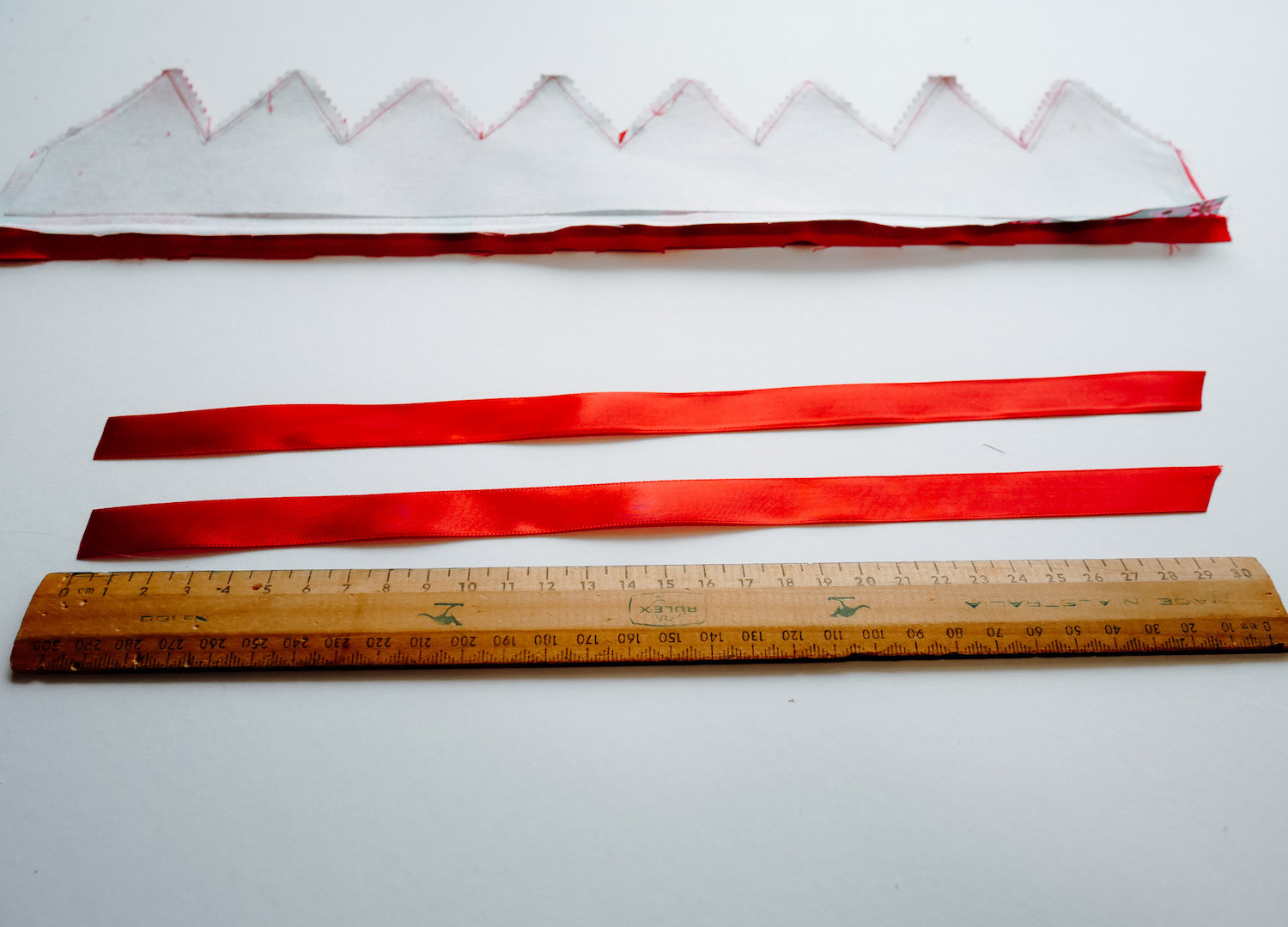
STEP SEVEN // Measure and cut 2 lengths of ribbon approximately 30cm long.
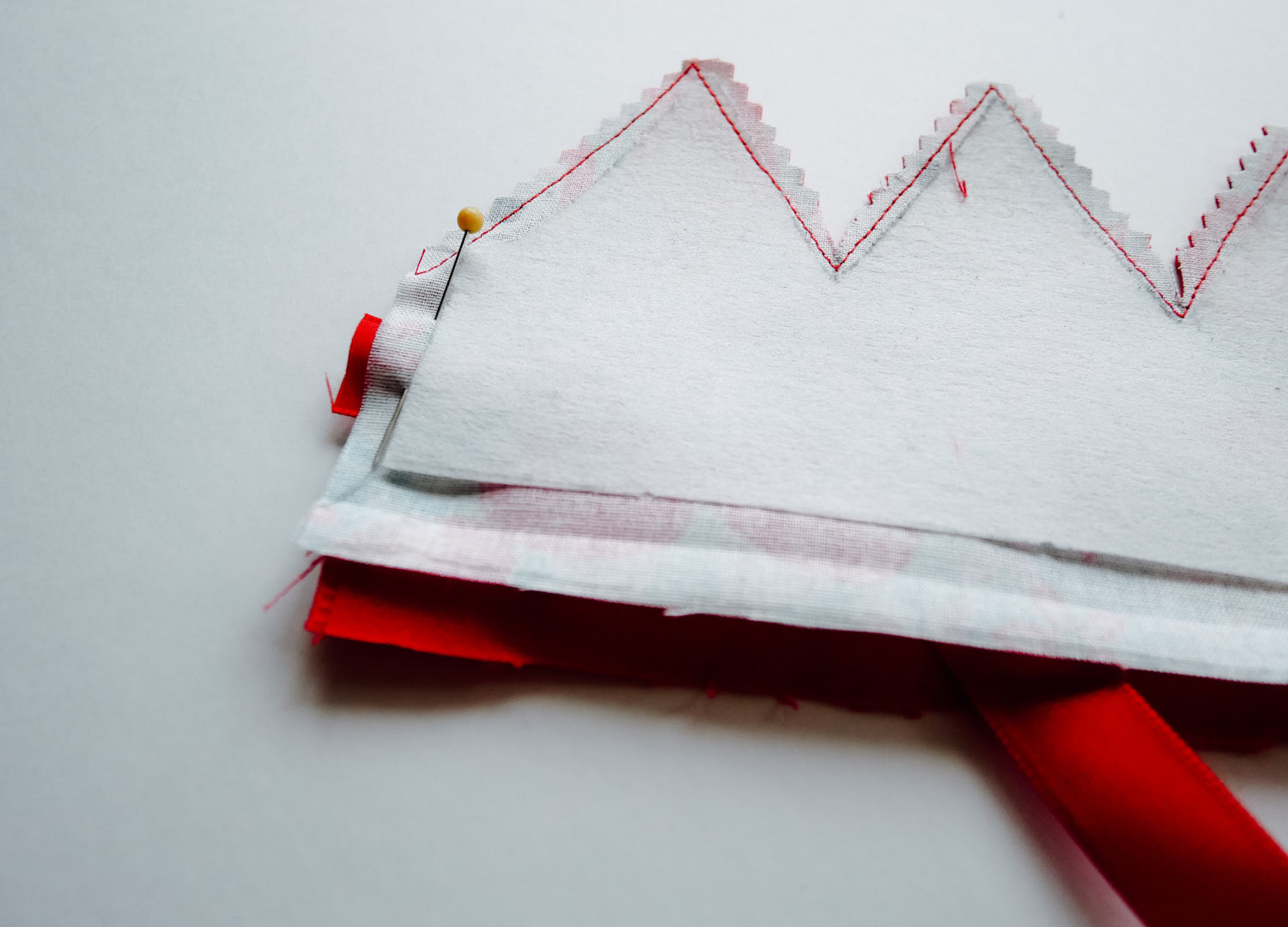
STEP EIGHT // Insert the ribbons into the crown so that the short length pokes through the open edges of the crown. Sew down along the sides.
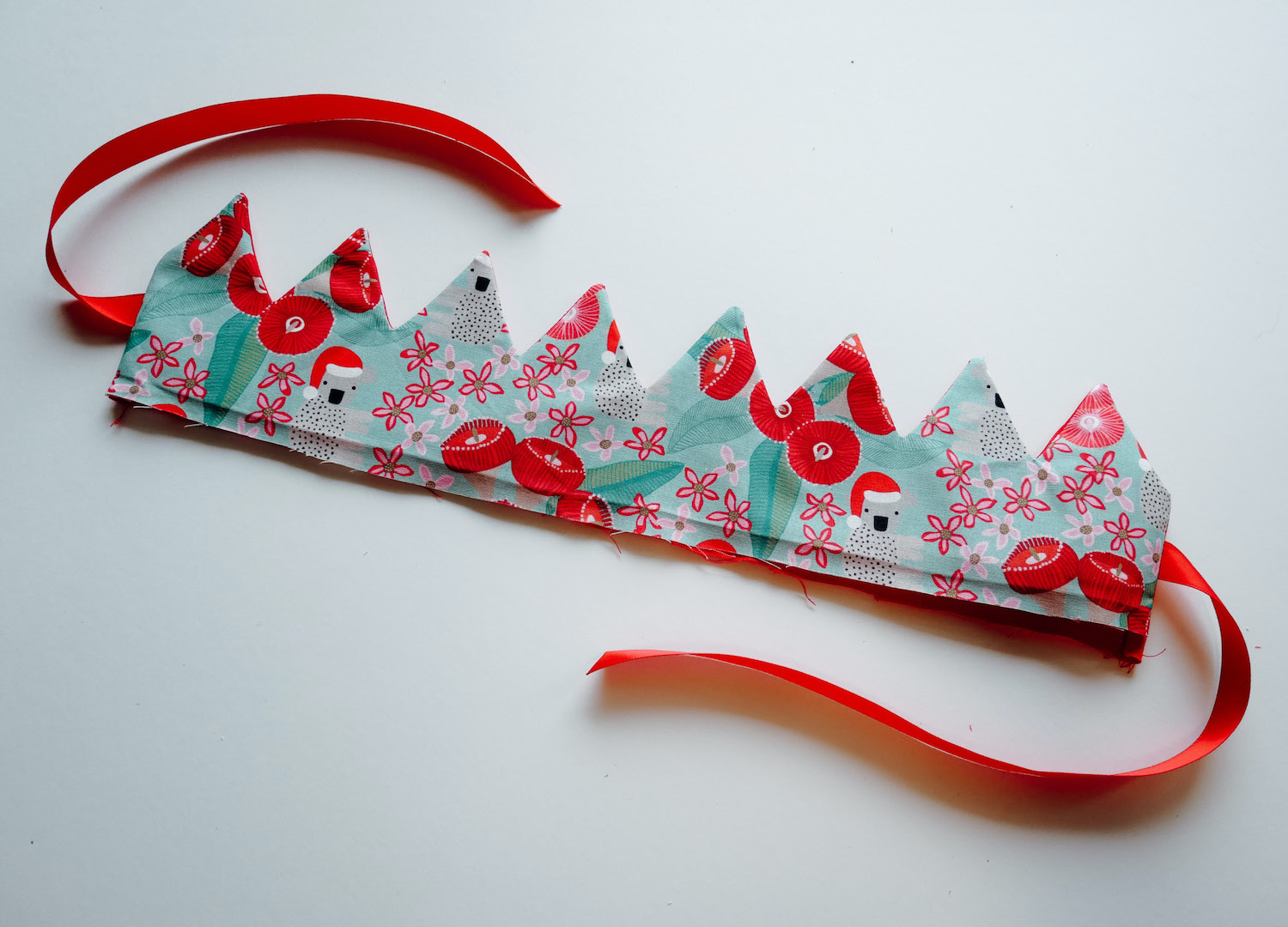
STEP NINE // Flip the crown right sides out. Take your time carefully poking out the points with a chopstick or the handle of a paintbrush (or a proper point turner if you’re fancy) so they stand nice and crisp.
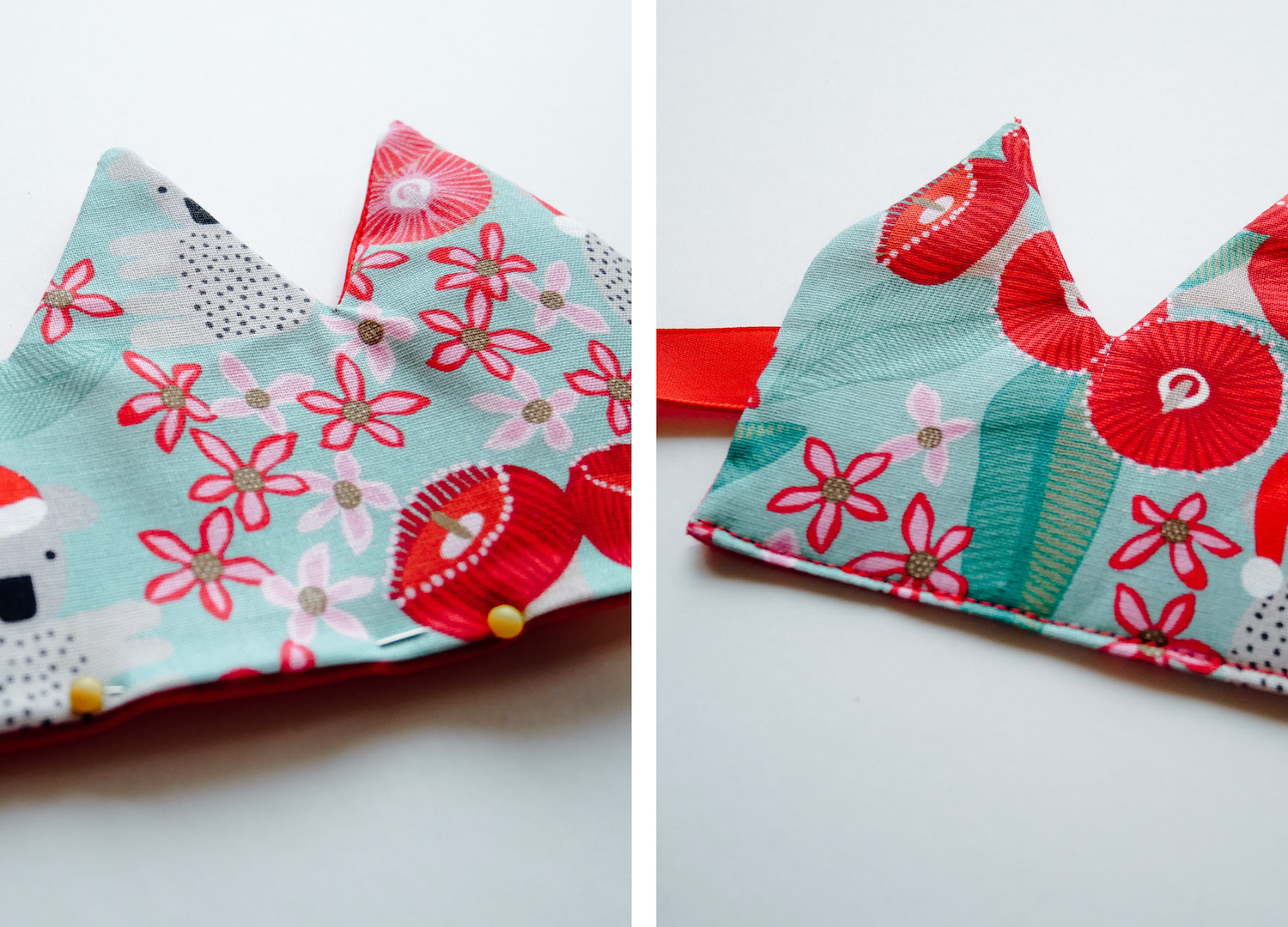
STEP TEN // Align folded bottom edges together neatly and top stitch closed.
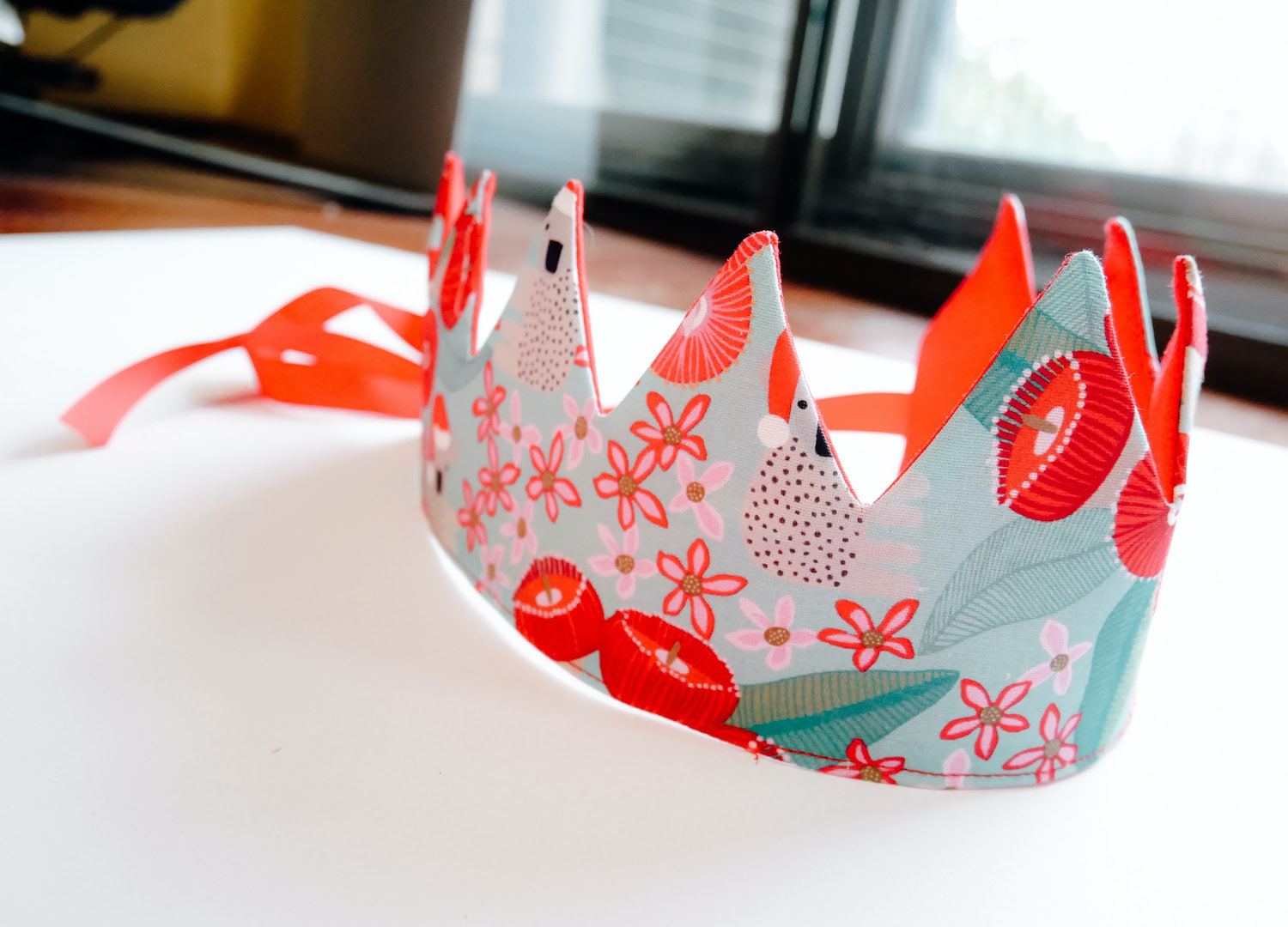
Ta-da – you have a beautiful fabric crown! Perform a quick coronation and get ready to jingle bell rock this Christmas!

words process photos and pattern by BONNIE LISTON
JOIN OUR MAILING LIST
Brighten up your inbox with our not-too-frequent emails featuring Peppermint-related news, events, competitions and more!
explore
More articles
When you hang a painting on a wall, the story stays put. But when you wear a beautifully made garment that may as well be a piece of art? The story travels. It moves through the world with you –…
We all do it: fire up the car for a 5-minute drive to pick up groceries, drop off sewing supplies, or run a quick errand…
Here’s a question: who decided that natural fibres aren’t a great fit in activewear? For Geraldton mum-of-four Jade Payne, that question became paramount after a…
Fancy a getaway in a heritage building that was once a hospital, an orphanage AND a school in a previous life? Despite what your initial…
When the algorithm gods reward dance trends over hand-thrown ceramics, and building a website feels more stressful than a tax return, where’s a maker to…
Time-travelling lungfish floating in a mosaic of glass tiles, a four-breasted female empowerment goddess cast in bronze, and a striking botanical sculpture spanning 15 metres,…
Hang out with us on Instagram
“Crafting is something that has come naturally since I was small and I just haven’t stopped. When I was smaller, I was interested in the end result. As I’ve gotten older, I realise it’s the process that keeps me coming back to craft. It’s a meditative state for me and I find the repetitive action of the stitching and felting quite therapeutic.”
Craving a world filled with warmth and whimsy? It’s all in a day’s work for textile artist @Cat_Rabbit, whose latest book, ‘Trinkets’, is bursting with felty food friends to make and cherish. Cat invited us into her universe, filled with cheeky characters, layered storytelling and loads of humour.
Plus: try the super sweet pattern for Cat’s Lucky Pickle, perfect to make as a stocking stuffer, extracted from Trinkets.
Read more from our ‘Just felt right’ feature in Issue 64, at newsagents and stockists now!
Photos: Tatanja Ross @On_JacksonStreet and Cat Rabbit
#PeppermintMagazine #CatRabbit #LuckyPickle #Craft #Crafting #Felting #FeltCrafts #Trinkets #ChristmasDecorations

Our hearts go out to everyone impacted by the Bondi Beach violence, especially the Jewish community. Also to the beachgoers, those who bravely helped and the first responders.
While it`s easy – and understandable – to get caught up in the horror of it all and direct anger at certain groups, remember this quote from teacher and author Erin Gruwell: "Don`t let the actions of a few determine the way you feel about an entire group."
“You don`t fight racism with racism. You fight racism with solidarity," said Bobby Seale of the Black Panthers. And solidarity is exactly what we need right now.
If you are feeling overwhelmed, you are not alone. Remember there is much more kindness in the world than hate. ❤️🩹
@LifelineAustralia has created a Bondi Beach Incident: Wellbeing support guide, where you’ll find information about common reactions, reassurance that what you’re feeling is valid, and ideas for taking care of your wellbeing.
https://lifeline.org.au/bondi-incident
You can also call Lifeline on 13 11 14, text on 0477 13 11 14 or chat at lifeline.org.au/crisis-chat anytime, no matter how this has impacted you.
@BeyondBlueOfficial is also available with free 24/7 support by phone on 1300 22 4636 or webchat at https://www.beyondblue.org.au/
Register.Find.Reunite. has been activated by @RedCrossAu to help people reconnect with family and friends. Visit redcross.org.au to access the service.
@NSWPolice Public Information and Inquiry Centre (PIIC) is operating 24/7 on 1800 227 228 for information relating to people impacted.
@LifeBloodAu is supporting Sydney hospitals. O- and O+ blood are always in high demand in emergencies. To donate (from anywhere in Australia – all states are welcome and helpful!) call 13 14 95 or use the Lifeblood app.

Just a reminder… from @SugarHouseCeramicCo
This holiday season be kind, patient and shop local!
#ShopSmall #ShopLocal #SupportSmallBusiness

✨️ Our website is getting a glow-up! ✨️
Sorry for the inconvenience but it will be offline for a few days. You can still purchase subscriptions (perfect for chrissy presents!) via the links on the holding page.
Last year we were extremely excited to receive funding from the Meta Australian News Fund, in partnership with the Walkley Foundation. The result of this is a fabulous new website, with a sustainable fashion and sewing directory that will follow early next year. We`ve worked with the lovely Amy and Jenny at @CrumpetClubHouse who have been making the magic happen – we can`t wait to show you the outcome! ✨️
In the meantime, please get in touch if you need help with anything – hello@peppermintmag.com
We`ll see you on the other side! 🌈

🎀 12 DAYS OF XMAS GIVEAWAYS 🎀
🎄On the 12th day of Christmas, we’re giving away… a GREENPAN FROST ICE CREAM & FROZEN DRINK MAKER! 🎄
Ice, ice, baby! Calling all kitchen magicians and dessert devotees: it’s time to churn, blend and devour your way to frozen heaven. It’s our final giveaway – and hoo girl, it’s a goodie! Thanks to the clever folks at @TheOriginalGreenPan.Anz, one reader will cool their mitts on the Frost Ice Cream & Frozen Drink Maker – perfect for conjuring up home-made gelato, sorbet, smoothies, slushies and more!
Valued at $599, the Frost Ice Cream & Frozen Drink Maker is designed with GreenPan’s signature Thermolon™ ceramic non-stick coating, so you can whip up summer-ready sweet treats free of PFAS, PFOA, lead and cadmium.
To snag this frosty prize, follow @TheOriginalGreenPan.Anz and tag a friend in the comments below before midday AEST 15 December! (Australian and New Zealand addresses only, please.) Good luck!
Update: The lucky winner of our final giveaway is @just__for__van - congrats! We`ll dm to get your details. Well done! 🎉
#PeppermintMagazine #12DaysOfChristmas #12DaysOfGiveaways #GreenPan

Oh hey 👋🏼 Just a little reminder that our subscriptions are sent in paper envelopes, which is a bit of a rarity in our industry. 💅🏼
If you need more reasons to subscribe, how about these:
💌 Enjoy a new issue arriving in your letterbox every six months.
💌 Subscribers exclusively receive FOUR digital sewing patterns per year!
💌 You’ll be the first to get your hands (and needles) on our patterns with early access.
💌 Get a 20% discount code on back issues of Peppermint so you can start your collection today!
💌 Automatically go in the draw to win amazing prizes each issue.
💌 Feel good about your subscription arriving in plastic-free postage.
💌 Support a small, women-led Australian business.
💌 Help us make the world a better place!
And... it`s a perfect Christmas present! We have a downloadable card you can print to go with your gift.
💌 Link in bio!
#PeppermintMagazine #SupportSmallBusiness #ShopLocal #ShopSustainable #PlasticFree











